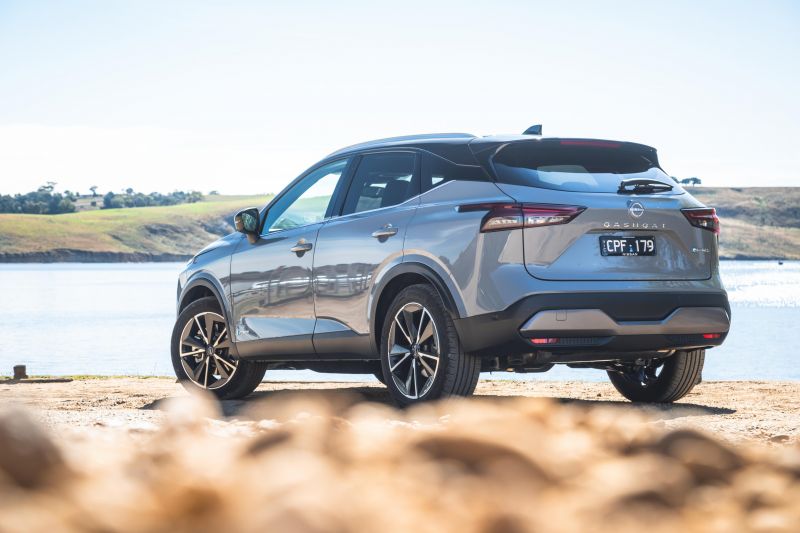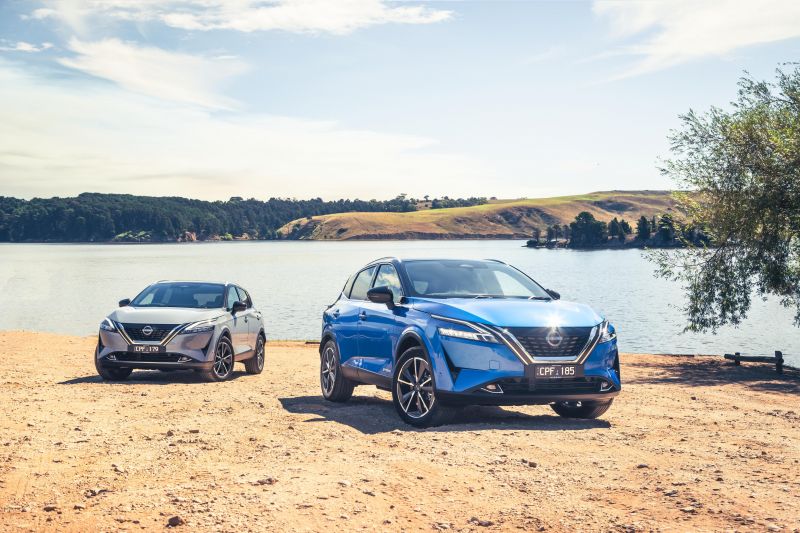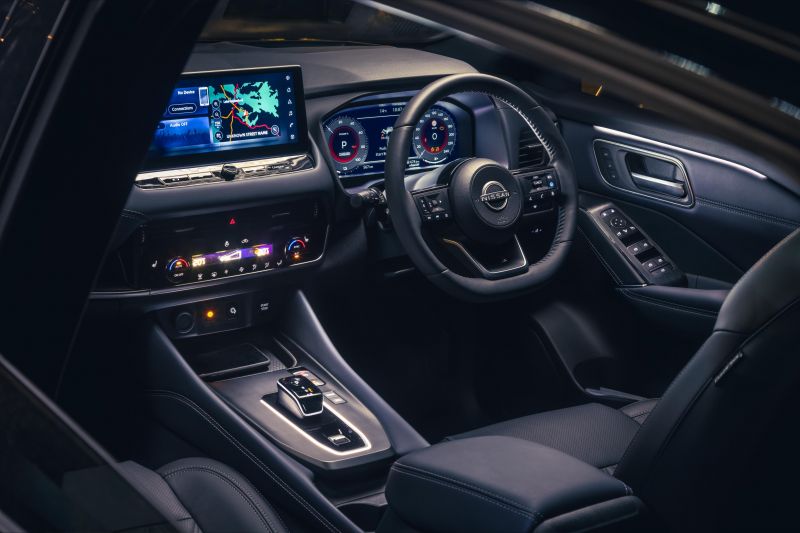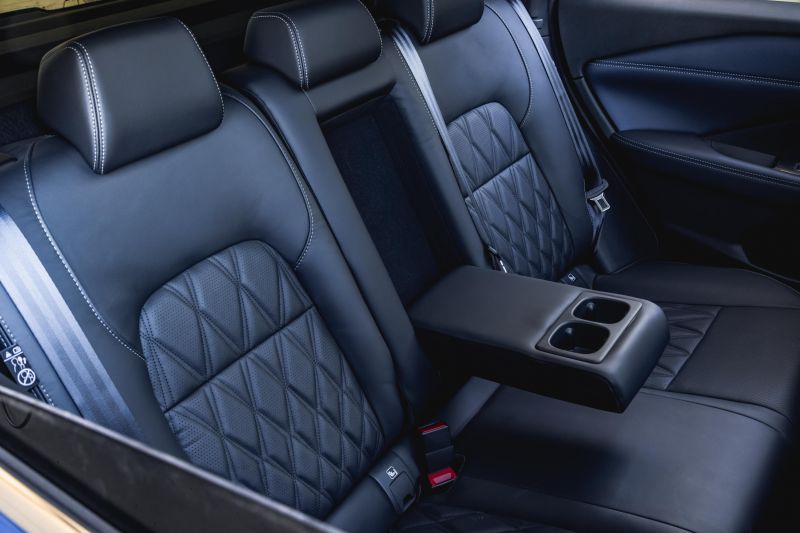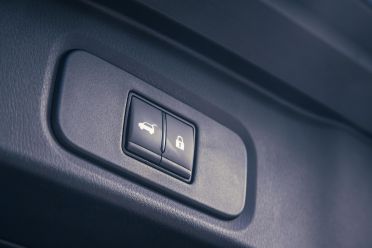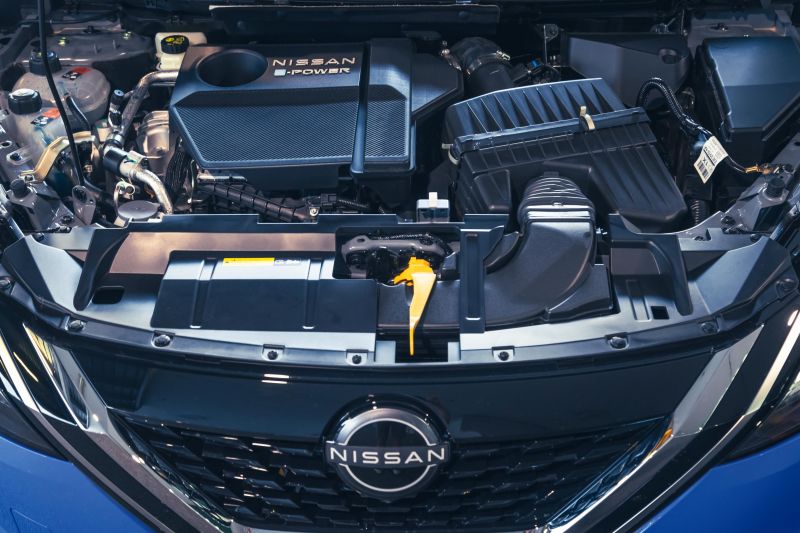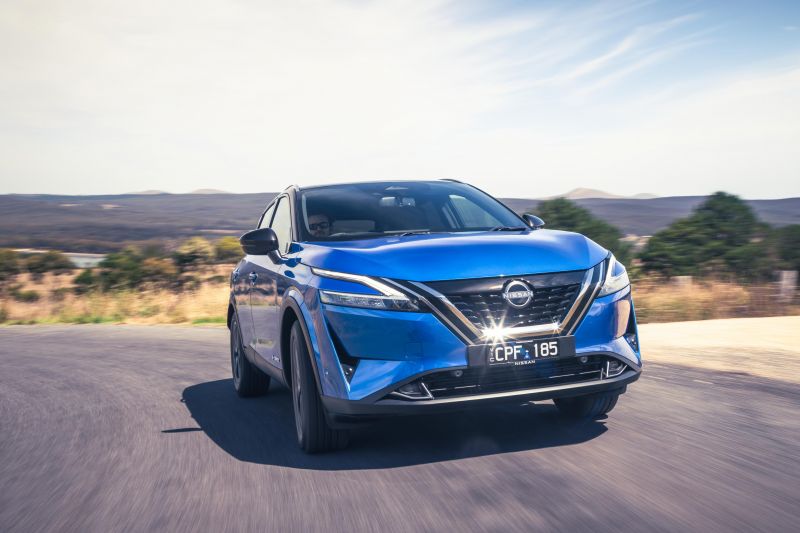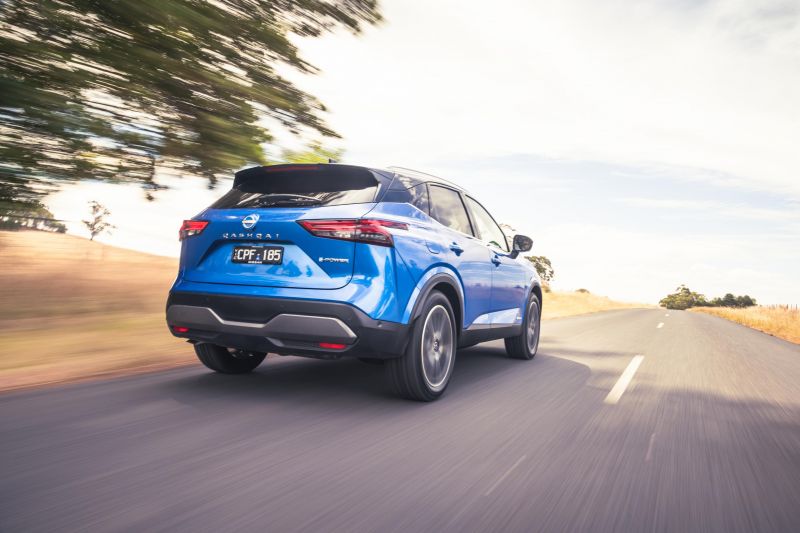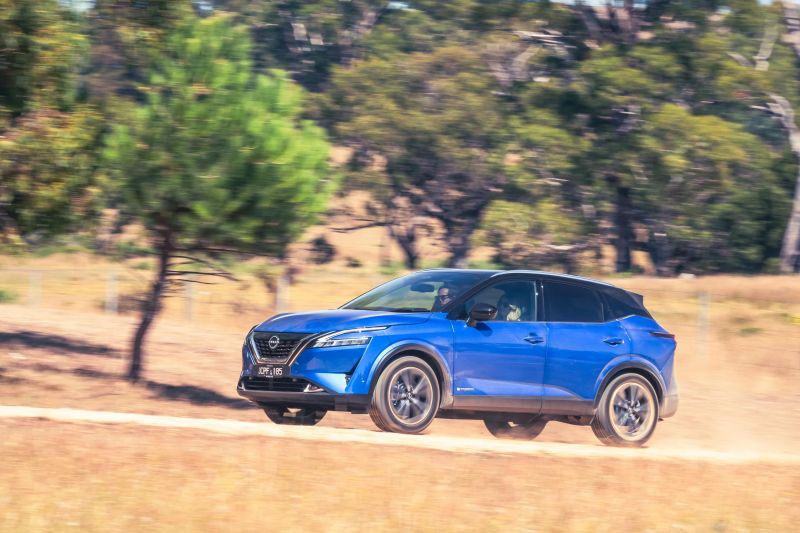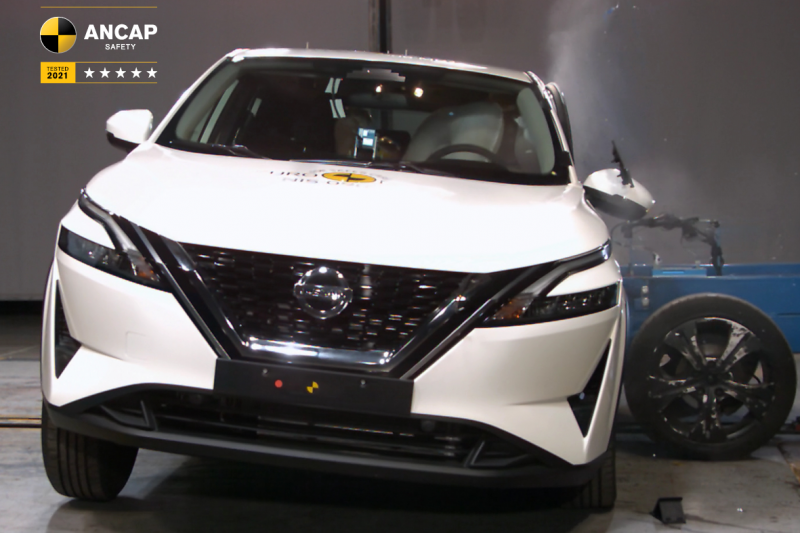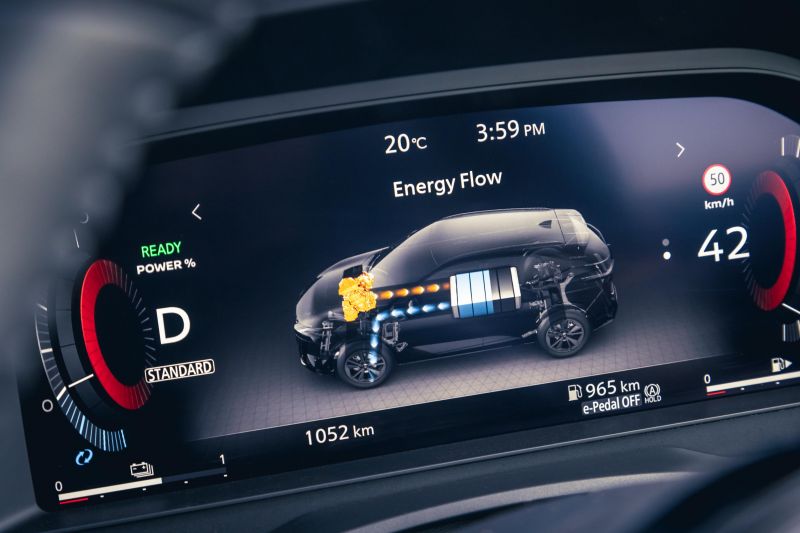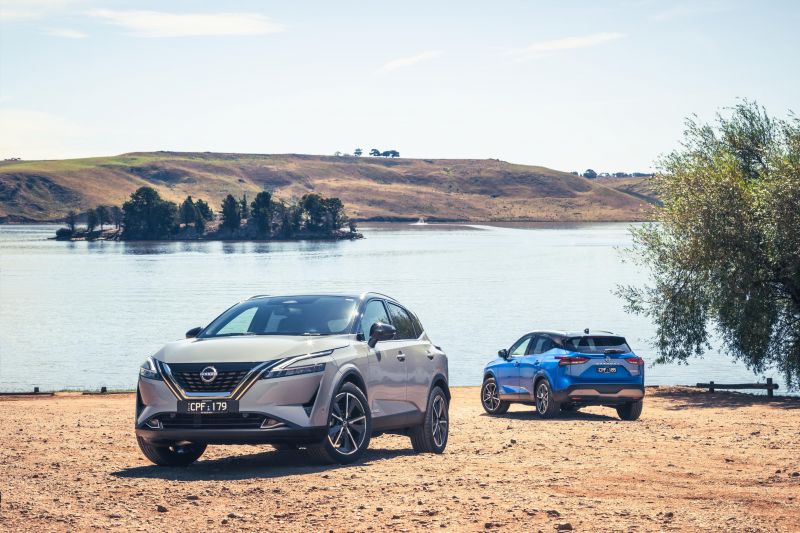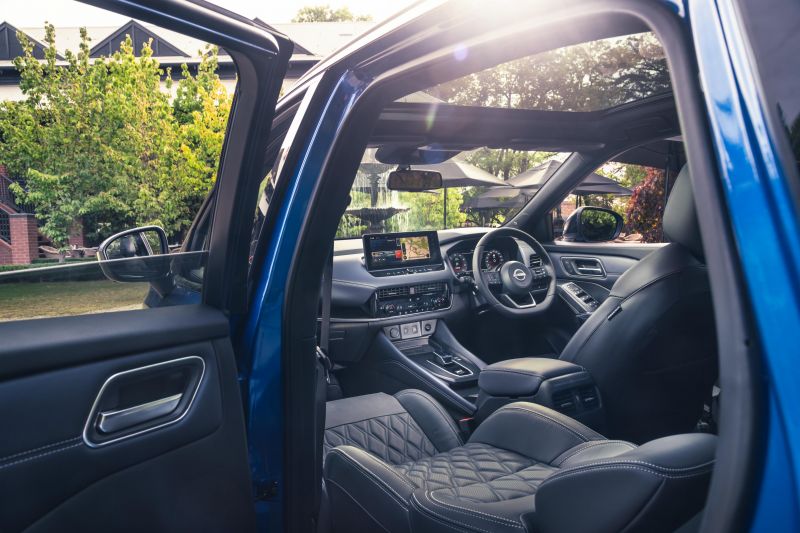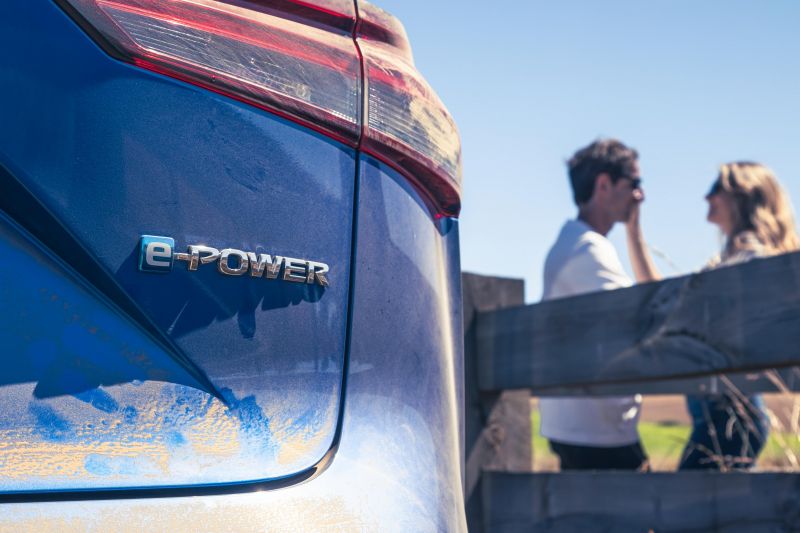The Nissan Qashqai finally has a hybrid option in Australia.
Having already arrived fashionably late – over a year after it launched in Europe and the UK – the 2024 Nissan Qashqai e-Power is hitting local dealers now.
What is e-Power? It’s the name of Nissan’s series hybrid technology that has been successful in Japan, and is filtering out through its global portfolio. It’s meant to drive like an electric vehicle (EV), without the need to plug in.
How does it work? Well, there’s a turbo petrol engine under the bonnet, but it doesn’t actually drive the wheels directly. Instead, it’s hooked up to an inverter, which itself is linked to a small lithium-ion battery and an electric motor, with the ICE motor serving as a generator to keep the battery charged.
It’s a bit different to the hybrid drivetrain concepts employed by Toyota and Hyundai-Kia, but the pitch is the e-Power range offers performance and refinement akin to an EV, rather than flaring revs like a Toyota-style hybrid and that shift between power sources.
The Qashqai e-Power is positioned in the thick of electrified SUV competition. It could be cross-shopped against the likes of the Toyota Corolla Cross and Hyundai Kona hybrids as well as the Toyota RAV4 and Kia Sportage hybrids.
As a more premium offering in the mainstream small SUV segment, you could also see the Qashqai e-Power as something of an alternative to the Audi Q3 and Lexus UX 250h – though only the latter is electrified.
Has Nissan got a winner on its hands? Or is it too little too late to make a meaningful impact?
How does the Nissan Qashqai compare?
View a detailed breakdown of the Nissan Qashqai against similarly sized vehicles.

Nissan
Qashqai
How much does the Nissan Qashqai cost?
Despite originally announcing two model variants, the Qashqai e-Power arrives in Australia solely in top-spec Ti trim, which carries a $4200 premium over the equivalent Qashqai 1.3T – it’s priced from $51,590 plus on-road costs.
2024 Nissan Qashqai pricing:
- 2024 Nissan Qashqai ST: $33,890
- 2024 Nissan Qashqai ST+: $37,890
- 2024 Nissan Qashqai ST-L: $42,190
- 2024 Nissan Qashqai Ti: $47,390
- 2024 Nissan Qashqai Ti e-Power: $51,590
Prices exclude on-road costs
What is the Nissan Qashqai like on the inside?
Just like the petrol Qashqai Ti.
With this latest iteration, Nissan has lifted the Qashqai from one of the also-rans in the segment in terms of cabin execution towards the top of the class – particularly as far as the Ti is concerned.
Swathes of soft-touch, padded leatherette surfaces, high-quality upholstery and high-resolution displays all combine to offer a tangibly upmarket ambience, giving the likes of the Mazda CX-30 some proper competition.
The big 12.3-inch touchscreen infotainment system featuring wireless Apple CarPlay and wired Android Auto remains a highlight, featuring embedded satellite navigation with live traffic updates, AM/FM/DAB+ digital radio, as well as USB-A and USB-C connectivity up front.
Being the Ti, there’s also a wireless smartphone charger, and a quality 10-speaker Bose premium audio system, in addition to a 10.8-inch colour head-up display and a 12.3-inch TFT digital instrument cluster with configurable views and menus.
All these amount to a perception of luxury and quality in the upper echelons of the mainstream segment, and the displays look and operate relatively well. However at times the centre touchscreen can be laggy and the digital instrument cluster isn’t as customisable as the stuff from the Volkswagen Group.
Nissan doesn’t offer net-based connected functions on the Qashqai like we’re seeing from other brands, namely Hyundai, Kia and Toyota, as well as the premium marques. Not a deal-breaker, but worth a mention.
Another gripe is the lack of LED interior lighting. Why Nissan went to the effort of including ambient LED strips on the centre console but yellowy incandescent overhead bulbs is beyond me – it feels dated in this respect.
The Qashqai maintains its big-car feel up front, with an upright and broad dashboard fascia giving an impression of height and width, while the elevated driving position will appeal to those wanting a commanding view.
Seat comfort is good in the quilted leather seats, which offer power adjustment for both front seats as well as driver memory and massaging functions for both front occupants.
Ergonomics are sound, with clearly labelled switchgear and physical HVAC controls (yay!), while the slot for your phone and cupholders between the front seats complement the deep centre cubby under the padded centre armrest.
One particular highlight of note are the door bins up front, which can accommodate my chunky Frank Green 1L water bottle – something most cars lately can’t seem to muster, other than the Mazda CX-60, VW Golf and Tiguan.
While the blue leatherette accents throughout the interior seem to work with the available blue exterior paint, I question whether it matches with all of the Qashqai’s other choices. Plus, some people may simply dislike having blue upholstery accents – let me know your thoughts in the comments.
The second row has long been a Qashqai strong point in the compact class, and this new generation continues that trend in the face of newer competition.
As a four seater, the Qashqai can happily carry six-footers behind taller front occupants, and the rear air vents, and USB-A and USB-C charge points are welcome. A third person can squeeze in the middle at a pinch, but if you’re regularly ferrying lanky teenagers I’d suggest walking across the showroom floor and looking at an X-Trail.
There’s also a fold-down centre armrest with cupholders, map pockets behind both front seats, and bottle holders in the rear doors. Kiddies are catered for with ISOFIX anchors on the outboard seats, as well as top-tether points across all three rear positions. The rear doors open nice and wide, too.
I will note the Ti’s fixed panoramic roof, while very panoramic in outward view, does eat into rear headroom a bit. It also felt like the Qashqai’s vast glasshouse across the front, sides and roof made the cabin particularly hot on summer scorchers.
As for the boot area, the Qashqai remains one of the largest in the class. Quoted luggage capacity for the Ti is 452 litres with the rear seats upright, expanding to 1376 litres with them folded.
Interestingly, the five-seat figure is better than the petrol models (418-429L) though the two-seat volume is worse (1513-1524L). Regardless it lines up well with the Hyundai Kona HEV (407-1241L) and mid-sized Mazda CX-5 (442L).
Part of the extra volume is likely down to the Qashqai e-Power’s inclusion of a tyre mobility kit in place of the space saver spare fitted on petrol variants – something to consider if you venture out of town often.
What’s under the bonnet?
There’s a 1.5-litre turbocharged petrol engine running Nissan’s variable compression technology, but it’s actually the front-mounted electric motor that directly drives the wheels – there’s no e-4orce all-wheel drive available for the Qashqai.
| Model | Nissan Qashqai e-Power |
|---|---|
| Engine | 1.5L 4cyl turbo petrol |
| Power | 116kW |
| Torque | N/A |
| Electric motor | Single motor, front axle |
| Power | 140kW |
| Torque | 330Nm |
| Battery | 2.1kWh li-ion |
| Fuel consumption (claimed) | 5.2L/100km |
| Fuel consumption (as tested) | 5.4L/100km |
| Fuel tank capacity | 55 litres |
| Fuel rating | 95 RON |
How does the Nissan Qashqai drive?
Having already spent plenty of time in the larger X-Trail e-Power, there’s a lot of familiarity here.
Key to Nissan’s e-Power series hybrid philosophy is an EV-like driving experience, hence the Qashqai e-Power only ever lets the electric motor directly spin the front wheels.
Unlike the X-Trail, however, there’s no e-4orce dual-motor all-wheel drive option. This single-motor variation is meant to be more efficient, with a quoted 5.3L/100km on the combined cycle versus the X-Trail e-4orce’s 6.1L/100km.
Nevertheless, the electric motor’s 140kW and 320Nm are the sort of figures you get out of a VW T-Roc R-Line, and the full torque output is available form standstill. It’s pretty zippy!
Nissan Australia doesn’t quote an official 0-100km/h time, though the UK division lists a 7.9-second dash to triple figures. Sure, not hot hatch fast, but pick up certainly is a noticeable improvement over the standard turbo petrol.
There’s a nice linearity to how the vehicle performs, and while not quite as strong as the dual-motor X-Trail, it’s got more than enough pep for the type of buyer the Qashqai e-Power is likely to attract.
It’ll quickly zip off the line from a standstill, even spinning up the front tyres if you’re a bit too eager, and pulls strongly right through to freeway speeds.
The Qashqai also has a nice and secure feeling at higher speeds some rival small SUVs can’t match. Even at 110km/h on winding and undulating roads, it inspires confidence with its big-car roadholding and predictable controls.
The firmer chassis tune, which I would describe as typically Euro taut, means that while the Qashqai can get a little jittery or unsettled over high-frequency road imperfections, it’s a keen handler and offers accurate steering which makes this a pretty nice thing to pilot up a winding road.
No it’s not a ‘sports’ utility vehicle, but it also isn’t as dull as a number of other vehicles in the segment. It’s a shame the rear can at times slap and thud over sharper hits, which some other vehicles in the segment like the VW T-Roc just don’t do.
The Qashqai e-Power also picks up an Active Noise Cancellation feature over the standard petrol-powered variants, which uses the audio system to play an alternative frequency to cancel out ambient noise. This helps the electrified Qashqai offer premium levels of cabin quietness even on the open road.
Our test route took us from Melbourne Airport through to Victoria’s north west. A variety of road surfaces and environments were seen during our tour through Woodend, Daylesford, and into Hepburn Springs.
Now while the Qashqai e-Power isn’t going to challenge a Bentley or S-Class for in-cabin serenity, compared to most premium-badged compact crossovers the refinement levels are more than a match. Even at 110km/h on fairly rough country blacktop, the little Nissan SUV allowed minimal tyre roar into the cabin.
You also barely hear the 1.5-litre turbo petrol engine when it fires to life, unless you’re absolutely flooring it. Nissan has engineered the petrol motor to rev in stages to align with throttle inputs, even though the e-motor’s direct output isn’t necessarily tied to how hard the petrol engine is working.
As with the petrol-only Qashqai Ti, the e-Power comes loaded with the latest suite of Nissan’s assistance systems.
ProPilot combines adaptive cruise and lane centring functions for semi-autonomous highway driving, and it’s one of the less intrusive systems on the market. However, it’s best left to clearly marked freeways, as it can sometimes not detect fainter lines or make out single-lane country highways.
There’s no overzealous driver attention monitor or speed limit assist like we’re seeing proliferate the market right now, and Nissan’s excellent surround camera system with Moving Object Detection makes parking in tight spaces a doddle. Even better, there’s an intelligent park assist function that will park for you!
I’ll also note the e-Pedal function, which applies more regenerative braking for a more one-pedal driving experience. However unlike the Nissan Leaf EV, and more like the X-Trail e-Power, it’ll disengage at crawling pace and requires driver brake input to come to a full stop – best to try it for yourself to see if it suits your tastes.
What do you get?
Qashqai e-Power highlights:
- e-Pedal Step (one-pedal mode)
- Will decelerate to “creeping” speed
- Regenerative braking
- Vehicle sound (pedestrians)
- Active Noise Cancellation
- Premium front grille
- e-Power badging
Qashqai Ti standard equipment:
- Remote, powered tailgate
- Panoramic glass sunroof
- Auto-dipping side mirrors
- 12.3-inch TFT digital instrument cluster
- 10.8-inch head-up display
- Intelligent key
- Driver memory for seat, mirrors, audio
- 10-speaker Bose sound system incl. subwoofer, digital amp
- 8-way power front passenger seat
- 4-way power lumbar for front seats
- Driver memory function
- Massaging front seats
- Quilted premium leather trim
- Black headliner
Is the Nissan Qashqai safe?
The Qashqai wears a five-star ANCAP safety rating, based on Euro NCAP tests conducted in 2021 – this rating applies to all variants in Australia and New Zealand.
Category scores included 91 per cent for adult occupant protection, 93 per cent for child occupant protection, 74 per cent for vulnerable road user protection, and an impressive 97 per cent for safety assist.
Standard safety features include:
- 7 airbags incl. front-centre
- Autonomous Emergency Braking (AEB)
- Pedestrian, Cyclist detection
- Junction assist
- Reverse AEB incl. Pedestrian detection
- Active speed limiter
- Adaptive cruise control
- Blind-spot monitoring
- Rear cross-traffic alert
- Forward collision warning
- Lane departure warning
- Lane keep assist
- Rear parking sensors
- Reversing camera
- Traffic sign recognition
- Tyre pressure monitoring
Qashqai ST+ adds:
- Intelligent Around View Monitor (360 camera)
- Moving Object Detection
Qashqai ST-L adds:
- Front parking sensors
- ProPILOT (lane centring)
- Alarm system
Qashqai Ti adds:
- Intelligent Park Assist (semi-auto park)
- Side parking sensors
How much does the Nissan Qashqai cost to run?
The Qashqai is covered by Nissan Australia’s five-year, unlimited-kilometre warranty.
In addition to the warranty coverage, Nissan throws in a five-year, 24-hour roadside assistance program.
Scheduled maintenance is required every 12 months or 15,000 kilometres – whichever comes first. This is better than the X-Trail’s 10,000km intervals (countered by slightly cheaper services).
You can pay as you go, otherwise Nissan offers Pre-Paid Maintenance Plans covering three, four or five years – prices for the e-Power are $1152, $1650 and $2007 respectively, all of which are hundreds cheaper than the petrol, particularly over five years where the saving is closer to $900.
CarExpert’s Take on the Nissan Qashqai
The e-Power is the best iteration of the Qashqai on sale.
Nissan’s series hybrid setup makes this a smooth and strong performer, and better suits the Ti grade’s more premium pitch – it could make a lot of sense against an entry-level Audi Q3, BMW X1 or Lexus UX 250h, for example.
It’s also like Toyota’s hybrid range in that there’s really little adjustment in terms of transitioning to the electrified drivetrain. You get in and go like a normal car, and just fill it up with petrol. You’ll just have to visit the servo less, and you’ll be enjoying a quieter and more effortless daily drive experience too.
However, I will say that Nissan’s imposed $4200 premium for the e-Power option is a bit steep, especially when other brands are cutting their hybrid premiums to the $2000-$3000 mark.
For the budget-conscious buyer, it just means it’ll take longer and more miles to make back that investment at the pump, though an argument can be made for the immediate performance and refinement gains, as well as cheaper maintenance costs.
The Qashqai is tangibly more premium in feel and performance than the Corolla Cross Hybrid, if not quite as economical. Similar story to the new Hyundai Kona Hybrid; though both rivals cost less even in their highest-spec forms.
It’s also a shame Nissan Australia backtracked on offering a cheaper ST-L variant, citing overwhelming interest in the Ti. The company hasn’t ruled out expanding the range moving forward should there be strong demand, however.
All told, the Qashqai e-Power enters the Australian market as a competitive electrified offering for those wanting a well sized and well appointed small-ish crossover, straddling mainstream and premium segments much like it blurs the lines of the size classes – not quite standout, but worth a look for sure.
Click the images for the full gallery
MORE: Buy a Nissan Qashqai
MORE: Everything Nissan Qashqai
















